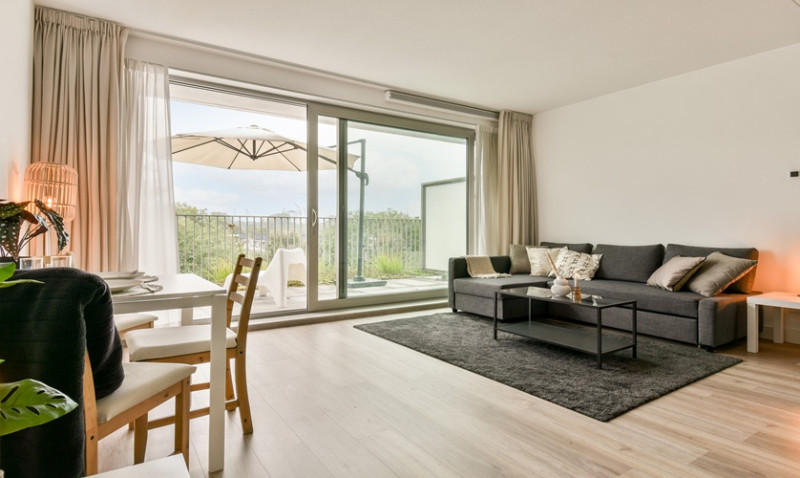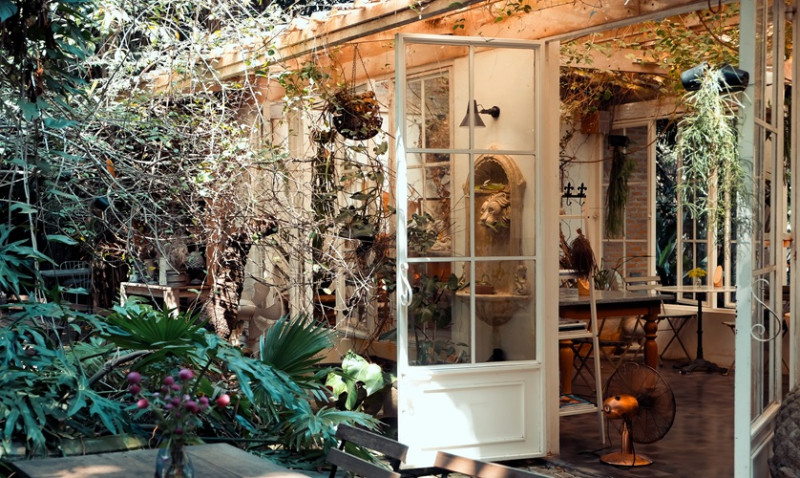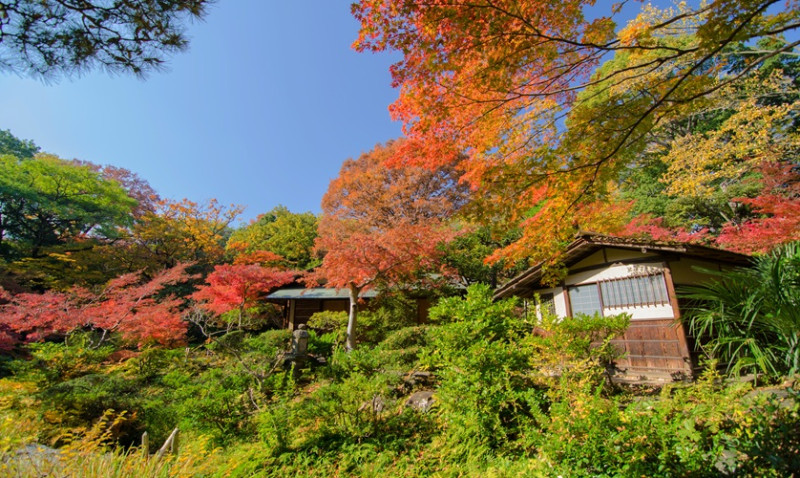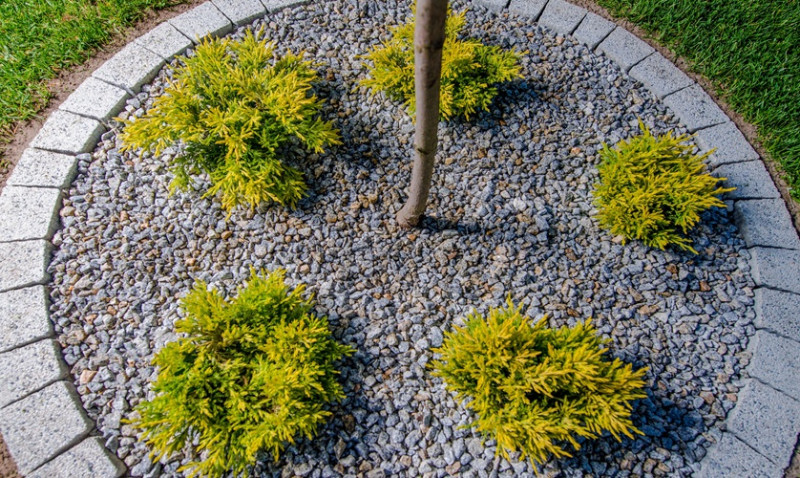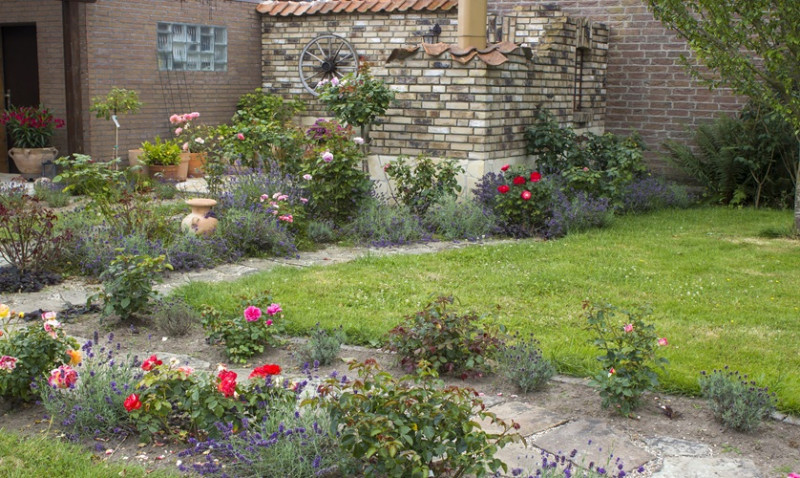
Whether you're working with a small urban courtyard or a sprawling countryside property, a rock garden can be an eye-catching, low-maintenance landscaping solution. Popular across the UK for its rugged charm, eco-friendliness, and versatility, a well-designed rock garden adds visual interest and texture to any outdoor space. In this blog post, we've compiled 28 stunning ideas and designs to help you transform your garden into a beautiful rocky retreat—perfect for DIYers, young professionals refreshing their homes, and design-savvy tradespeople.
1. Classic Alpine Rock Garden
A timeless design ideal for sloped terrain or well-drained areas, alpine rock gardens feature hardy, low-growing plants nestled among natural stones. They mimic mountainous terrain and are perfect for small or uneven spaces.
Use native UK alpines like Saxifraga, Phlox subulata, and Sempervivum to withstand year-round weather. Their compact size and vibrant blooms will contrast beautifully against grey-toned rocks like granite or limestone.
Add fine gravel or grit between rocks to improve drainage and control weeds. Alpine designs require minimal watering, making them ideal for sustainable gardening in both country and city settings.
Arrange your rocks carefully, mimicking natural craggy outcrops and placing the largest stones first to create contours and height variations before planting.
2. Modern Minimalist Rock Garden
For professionals with a flair for contemporary living, minimalist rock gardens combine clean lines, monochrome palettes, and carefully curated plant varieties. The emphasis is on texture and structure rather than lush foliage.
Use large slate panels or white gravel beds interspersed with spherical topiary or dwarf grasses like Festuca glauca for a sleek, modern aesthetic. This design works well in front gardens or patios to enhance curb appeal with minimal upkeep.
Keep the colour palette limited—think charcoal, white, and deep green—and arrange rocks in deliberate, geometric patterns to evoke serenity and spaciousness.
This design type lends itself perfectly to city dwellers with smaller outdoor spaces who still want to make a bold statement.
3. Dry Riverbed Landscape
A dry riverbed design adds movement to your garden visual without needing flowing water. This design mimics a natural stream made with pebbles and larger stones, meandering through planted borders.
Use river stones in varying sizes and shades for a lifelike look. Position larger boulders at bends and scatter drought-tolerant plants like Lavandula or Sedum alongside the “bank” to soften the edges.
This technique is particularly effective in large gardens or areas where drainage is poor, as the design naturally channels rainwater and reduces pooling.
Dry riverbed gardens offer a dynamic way to divide sections of your space while introducing a natural focal point that’s perfect for wildlife.
4. Rock Garden with Water Feature
Incorporate tranquility into your landscape with a small fountain or waterfall surrounded by carefully placed stones and low-water plants.
Water features add sound and movement, enhancing the sensory appeal of your outdoor space. Combine slate rocks with mosses and ferns for a serene, woodland-inspired setting.
This design is ideal for calming courtyard spaces or shaded areas where traditional flowerbeds may struggle to thrive.
Ensure the water element is correctly installed and lined to retain water and avoid leaks; using a solar-powered pump can keep things eco-friendly and low-cost.
5. Zen-Inspired Japanese Rock Garden
Draw inspiration from Japanese Zen gardens that focus on simplicity, symbolism, and harmony. These gardens often include raked gravel, upright stones, and sparse plantings to promote peaceful mindfulness.
Use crushed granite or limestone for the gravel base and accent with vertical rocks representing mountains or islands, according to traditional symbolism.
Sparse greenery like moss, dwarf pine, or ferns can be included, but the focus remains on the arrangement of rocks and space between them.
This minimal garden style requires little maintenance and works well in modern homes or offices, creating a calming escape directly outside your door.
6. Raised Rock Garden Beds
Ideal for garden lovers who want easier planting and weeding access, a raised rock garden incorporates stone walls into elevated beds filled with ornamental plants.
Dry stone walling using local materials like Yorkshire stone or Cotswold limestone adds a rustic British charm to your space while offering excellent drainage.
Fill raised beds with sharp sand, grit, and loam mix to create an ideal alpine environment, ready to host colourful blooms from spring to early autumn.
This approach also allows for better soil control, perfect for areas with heavy clay or poor drainage.
7. Urban Courtyard Rock Garden
If you live in a terrace or semi-detached home with limited outdoor space, transform your courtyard into a stylish rock garden oasis.
Choose vertical rock sculptures, potted succulents, and gravel beds to provide structure without overwhelming the space. Add ambient lighting and a small bench to encourage evening relaxation.
This style is particularly effective in inner-city areas like London, Manchester or Edinburgh, where gardens tend to be compact but with huge potential for design.
Opt for neutral tones and geometric placements to echo sophisticated design while preserving tranquility in the heart of the city.
8. Mixed Material Rock Garden
Don’t be afraid to incorporate multiple materials like wood, metal, and stone for a layered, modern look. This eclectic style adds personality and is ideal for creative homeowners or professionals wanting to experiment with textures.
Combine slate tiles with pebbles, brick edging, and driftwood for an eco-friendly yet artistic design. Choose coastal plants like Sea Thrift or Kniphofia to add vertical interest and bold colour.
This type of garden stands out in both rural and urban settings, giving character that evolves naturally over time.
It can also be easily updated with seasonal decor, lighting features or container plants for changing moods year-round.
9. Wildlife-Friendly Rock Garden
Create a habitat that welcomes pollinators, birds, and beneficial insects by selecting native UK wildflowers, nectar-rich plants and providing shelter via rock piles or log stacks.
Plants like thyme, yarrow, and Echinacea attract bees and butterflies, while flatter rocks offer basking spots for insects and reptiles.
Position your garden in full sun and use open gravel spaces to allow warmth retention and self-seeding, keeping long-term maintenance minimal.
This garden type contributes to local biodiversity while offering changing natural beauty throughout the year.
10. Small Balcony or Container Rock Garden
Live in a flat and think you can’t enjoy a rock garden? Think again. Container rock gardens are perfect for balconies and small patios.
Use ceramic or stone pots filled with turf-like sedums, dwarf conifers, or succulents along with pebbles and small boulders for drama.
This mobile design format means you can rearrange and experiment with your layout seasonally or adapt to different sun exposures.
Combine container height and varying gravel colours for extra visual flair, bringing nature upwards even in high-rise living.
11. Coastal Pebble Garden
Reflect a seaside theme with bleached pebbles, driftwood, and salt-tolerant plants like Sea Kale and Armeria maritima.
This is a great choice for UK residents living near the coast, from Cornwall to Scotland. Its wind- and drought-tolerant nature makes it functional and aesthetically laid-back.
Use crushed oyster shells or white grit between plants to keep the palette light and complement blue-grey rocks and silver-leaved plants.
A coastal pebble design offers holiday vibes and is virtually maintenance-free once established.
12. Children’s Rock Garden Adventure Zone
If you’ve got young ones at home, a mini rock garden can double as an exploration zone. Use soft-edged stones, gravel paths, and colourful low-growers to spark curiosity.
Incorporate stepping stones, hidden fairy houses or mini bridges amongst the rocks. Plants like Chives, Clover, and Lamb’s Ear are soft to the touch and safe for little hands.
This landscape stimulates sensory discovery while still being practical and durable. It also requires no mowing—more time for play!
Add painted rocks or homemade sculptures for a personalised, educational space both kids and adults can enjoy together.
13. Rock Garden Pathway Integration
Want to seamlessly integrate your rock garden with the rest of your landscape? Consider incorporating gravel or stepping-stone pathways through your design.
This makes your garden more accessible and breaks up planting with rhythm and flow, especially effective in narrow or long spaces typical in British terraced homes.
Choose materials that contrast – such as pale York stone slabs surrounded by dark basalt gravel—to draw the eye and define walking routes around your garden.
You can also use stepping stones to frame key viewing angles and create drama even in smaller properties.
Rock Garden Planting Ideas Table
| Plant Name | Sunlight | Soil Type | Best Used In |
|---|---|---|---|
| Sedum | Full Sun | Well-drained, Sandy | Container Gardens, Slopes |
| Alpine Saxifraga | Part Shade | Gravelly | Alpine Gardens |
| Sempervivum (Houseleek) | Full Sun | Dry, Rocky | Minimalist, Zen Gardens |
| Festuca Glauca | Full Sun | Neutral to Alkaline | Modern Designs |
| Lavender | Full Sun | Chalky, Sandy | Dry Riverbeds |
| Thymus serpyllum (Creeping Thyme) | Full Sun | Well-drained | Wildlife Gardens, Paths |
Final Thoughts
From zen-inspired arrangements to playful children’s landscapes, rock gardens can work with any British lifestyle or outdoor environment. Whether you’re refreshing a tired patio or making better use of a sloped backyard, incorporating stone elements offers both form and function with long-lasting appeal.
Want to take it further? Combine multiple themes like raised stone beds with coastal pebbles or add solar lighting features for nighttime ambiance. The key is to start with a few ideas that suit your space and grow from there.
Ready to roll up your sleeves? Rock gardens not only last the test of time but are cost-effective and environmentally smart—making them a favourite among DIYers, design professionals, and tradesmen alike.
Bookmark this list for your next landscaping project or share it with a friend planning their outdoor makeover this season. With 28 ideas in your pocket, there’s no limit to what you can achieve with a few beautiful rocks and some imagination.
